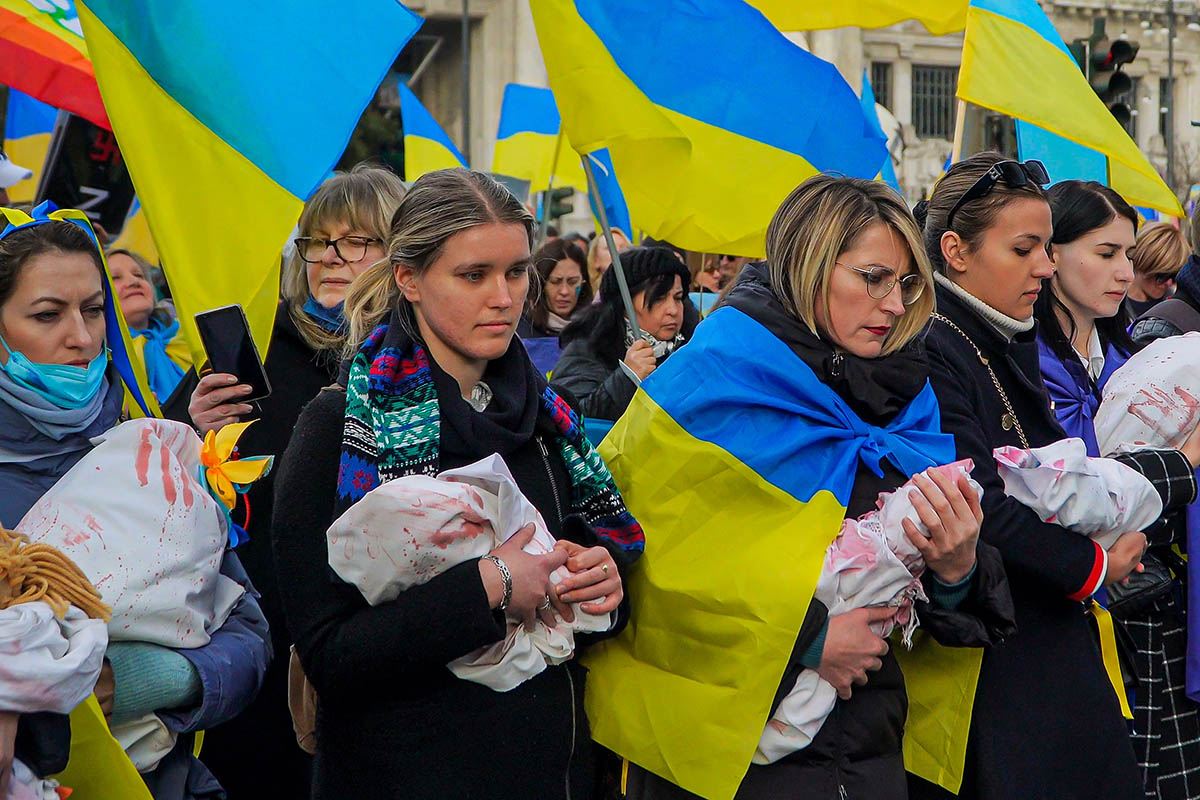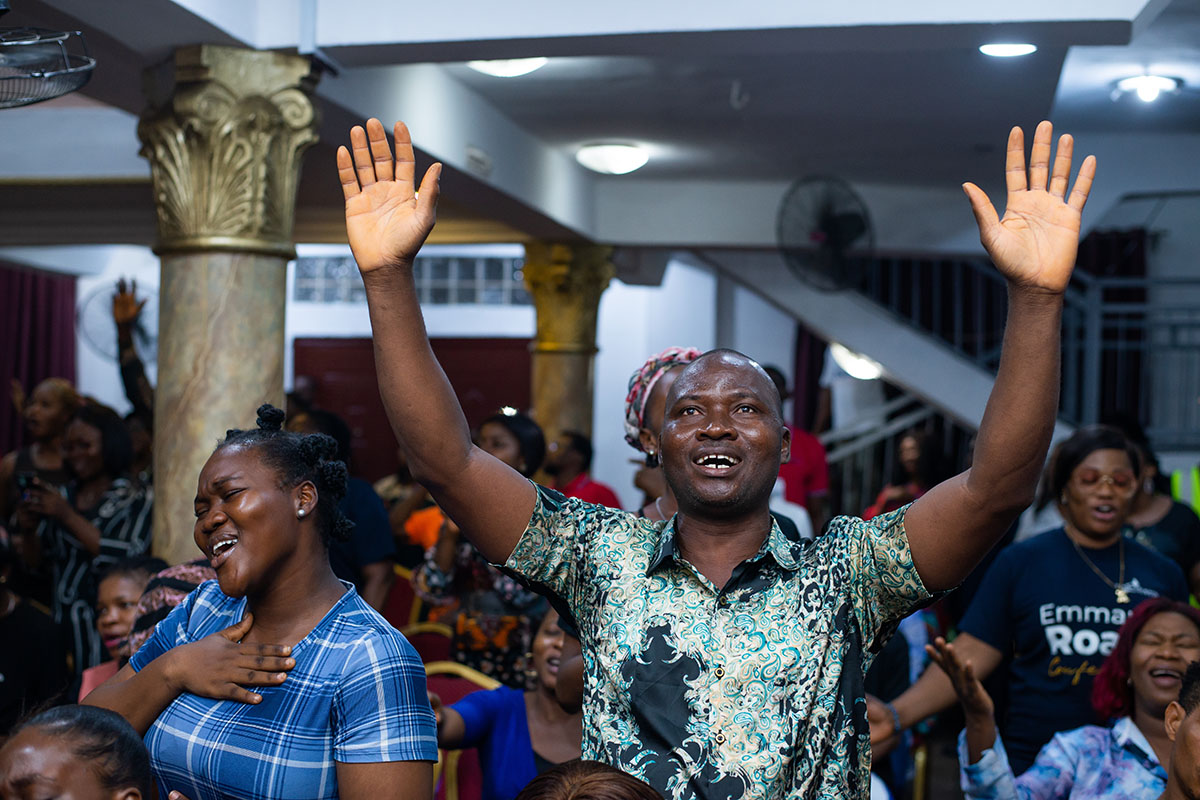The Future of Peace: Examining the Potential of Feminist Peacebuilding
September 23by Lilian Efobi
Just as a sperm needs an egg to form a foetus, so should women be involved in the peacebuilding process.
In various wars, crises, and violent conflicts, women are killed, sexually abused, forced to assume fatherly roles, or even forced to accept weapons in defence of their children and communities. Today, women have become the backbone of Ukraine’s economy. In South Sudan, about 1.2 million pregnant and breastfeeding women will suffer from malnutrition this year and face severe health complications during and after delivery. Children and women are dying of starvation and abuse. In the DRC, women are taking up guns to defend their communities, joining fighter groups alongside other women to defend against opponents. These women also becoming caretakers of the male fighters’ camp. In Gaza, 4,959 women and 7,797 children have been killed.
In all these conflicts, the face of displacement for the women is a baby in one hand and a mattress in the other, with an uncertain future. This article argues that an intersectional approach to peacebuilding and peace negotiations will strengthen the feminist peacebuilding processes and contribute to a sustainable future of peace, for in every war or conflict, women end up being the most affected.
Is this the world we envisage for our mothers, wives, sisters, daughters, aunts, and nieces?
The unpredictability of the beginning of conflict and the uncertainty of its end keep the guns blazing due to a focus on its impact rather than its root causes. When the shellings become quiet and the level of damage is assessed, the impact on the burden bearers—women—who have been devastated and affected by the loss of their husbands, properties, children and abuse is revealed. Yet, they will be encouraged to rebuild and start all over again, without a certainty of peace for the future. Most times in conflict resolution, starting all over again for women is focused on the rehabilitation and recovery process, but not the reconciliatory process, which is the most crucial stage in conflict resolution. According to the 2021 United Nations Secretary General’s Report on Women, Peace, and Security only 8 out of 25 peace agreements in 2021 referenced women. In the Ethiopia-Tigray truce, Myanmar, the Balkans, Sudan and Yemen, women were excluded. Only in Columbia was the presence of women visible.
No country can ever truly flourish if it stifles the potential of its women and deprives itself of their contribution – Michelle Obama
Today, the need for a sustainable peacebuilding approach is as crucial as ever due to the rising conflicts, social injustices, nuclear threats, environmental degradation and more. Feminist peacebuilders seek more empathy, inclusion, and social justice in peacebuilding efforts with a lens on the experiences and perspectives of women and marginalised communities. Liberal peacebuilding, focused on problem-solving rather than tackling the root drivers of conflict, has not helped provide a peaceful world for us. A holistic, intersectional, and critical approach to peacebuilding, which focuses on peacebuilding from the local to the national, and international should tackle systemic barriers such as patriarchy and oppression which limit marginalised voices from being heard.
The question becomes, can patriarchy be dismantled?
The United Nations Security Council and General Assembly passed identical resolutions under the 2015 Peacebuilding Architecture Review highlighting the significance of a comprehensive strategy for peacebuilding that encompasses all stages of peace and not just immediate post-conflict reconstruction. This approach, which has been tagged “Sustaining Peace” within the UN system, defines peace “as a goal and a process to build a common vision of a society.” Daily, peace activists and feminist scholars improve on the concept of peace, and examining their vision for a feminist future of peace is crucial.
Examining feminist peacebuilding
Feminist peacebuilding calls for a fundamental change in the way we approach conflict resolution, and not only the inclusion of women in already-existing peace initiatives. It requires us to put relationships, empathy, and understanding amongst people before dominance and authority. The sheer presence of women at conferences or around tables does not mean that feminism will be reflected in peace negotiations or in the reconstruction that follows a conflict. Likewise, in post-conflict settings, mainstreaming gender equality into peacebuilding and reconstruction initiatives rarely transforms the structural power asymmetries. To contribute to a peace that works for everyone, feminist peacebuilding should seek to recognize, unravel, and modify the complex power relations that influence the lives of those developing and participating in peacebuilding programs.
Weaponization and militarization
As I earlier mentioned, because the international system and their government are powerless to defend women in the Democratic Republic of Congo, they are obliged to defend themselves by holding a baby in one arm and a weapon in the other. So, is it possible for there to be fewer battles and no weapons in a feminist future? Perhaps we all hope for such a world, one free from nuclear threats, one devoid of conflict. More risk will also arise from increased militarism and threats of weapons for these women following the wars. As a result, the feminist peace is now in a precarious situation with an uncertain future.
What then does a feminist future look like?
A feminist future is one devoid of conflicts, according to feminist peacebuilders. Feminists share the belief that structures that perpetuate violence along the continuum from private violence to political violence, human trafficking, and war must be examined, unpacked, and transformed. This belief is held despite the contestation and contradictions that are emerging within feminist movements, particularly in nations torn apart by conflict. Globally speaking, this entails paying closer attention to militarization narratives and practices not just in the context of any given conflict, when they become especially prominent, but also more generally and in countries that are regarded as peaceful. It also entails paying attention to proposals to fund locally driven campaigns for peace and economic empowerment rather than increasing global military spending.
It also entails being more aware of how the systems that established international organisations, like the UN Security Council, contribute to and maintain power disparities, and the need to reform them for the better. It entails giving women and other marginalised groups substantial consideration while making decisions at the local and national levels. It entails giving them resources to conduct and intensify their work, acknowledging and confronting underlying power dynamics that frequently permeate the partnerships between local, national, and international actors, and involving them in peace processes and decision-making about reconstruction and peacebuilding programs from the outset. Thus, a commitment to transformation and structural change is necessary for a feminist future. That is the only way we can start to seriously question the cycle of violence and envision a society free from conflict.
Intersectionality is the way
The concept of intersectionality regarding gender discourse was first used in 1989 by Kimberle Crenshaw to explore the context in which gender intersects with other characteristics like ethnicity, class, religion, identity, sexual orientation, disability, and age to create crisscrossing structures of subordination. Her goal was to strengthen and broaden feminist analysis. Intersectionality refers to how discriminatory systems based on sexual orientation, gender, racism, ethnicity, disability, class, and other factors mutually reinforce each other to produce particular conflict dynamics and impacts on vulnerable people. To ensure that women working in peacebuilding are safe, not stigmatised, and not exposed to other types of violence including political violence, an intersectional approach to feminist peacebuilding must take these dangers into account.
Pertinent data must be gathered to influence policy about women’s involvement and rights. Women are absent from the majority of conflict-related data, which leads to their exclusion from legislative initiatives. Therefore, capturing and documenting the lived experiences of all women through feminist perspectives will produce evidence for policy responsiveness. Data must identify and challenge current oppressive structures and gender disparities, as well as how they interact to impact women and girls in vulnerable environments. These data may be presented in a variety of ways, such as profiles of women who have been displaced by war or who are refugees. keeping them updated on the peace processes and how they are changing in their communities. This information should be in their local languages for easy understanding and the women should be asked for viable solutions to the conflict. It is important to note that in collating these data, all categories of women recognised by the Women, peace, and security agenda, the Youth Peace and Security, and Sustainable Development Goals must be included.
The presence of peace tables that put warlords’ interests ahead of women should be a red flag to remove them. Since peace is not created overnight, it is important to encourage the development of collective power and the use of collective action in peacebuilding to assure sustainability. By tearing down unfair power structures and placing a focus on the needs and experiences of marginalised groups, an intersectional and non-discriminatory approach to feminist peacebuilding can unite movements, and identities and ignite change.
At the end of the day, feminist peacebuilding must recognise and respond to the systemic drivers of inequality and use emergencies as catalysts to advance women’s and girls’ rights. Even within itself, it must identify unjust formal and informal power relations by regularly critiquing the extent to which its structures and processes reinforce oppressive power relations through humanitarian action. Embracing intersectionality in feminist peacebuilding is unlocking a brighter future where peace is not merely the absence of conflict, but a vibrant tapestry of social justice, equality, and human prosperity.






